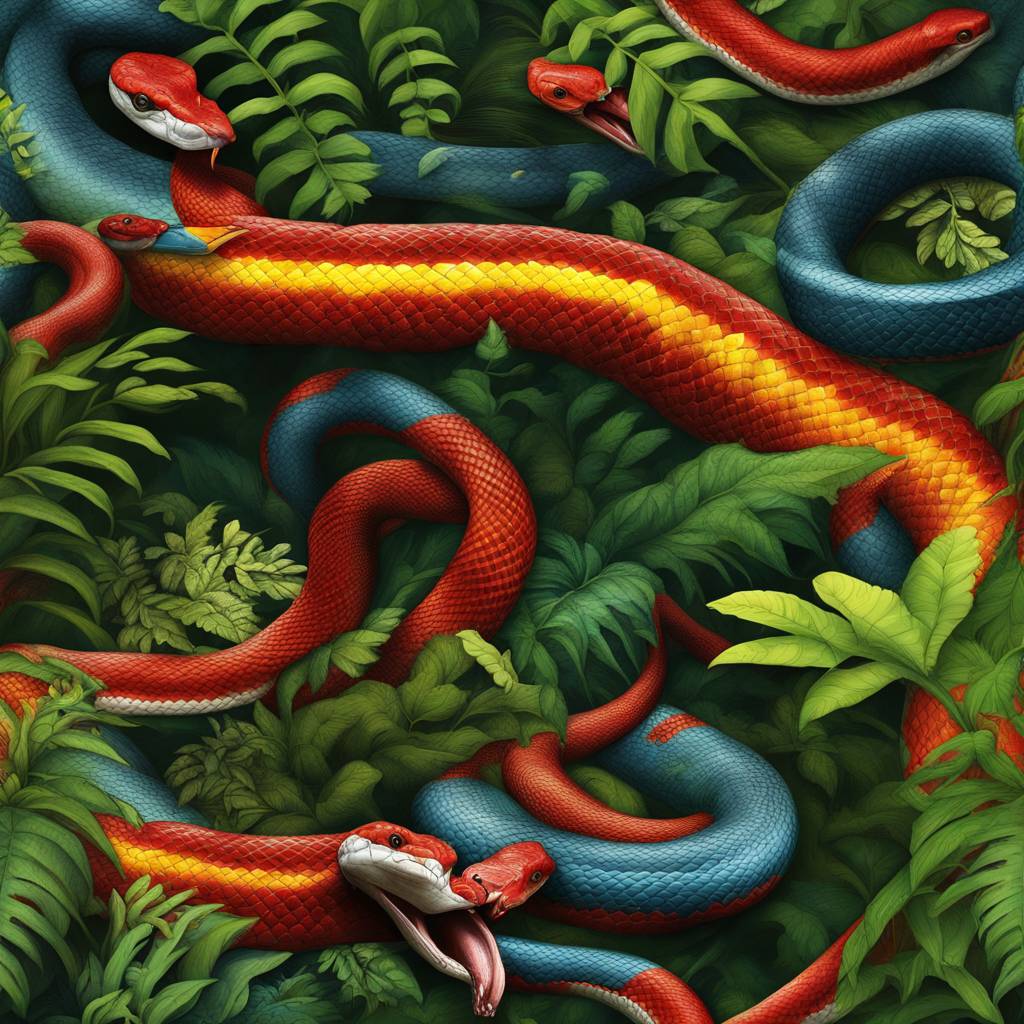Danish researchers Henrik Bringsøe and Niels Poul Dreyer recently published a study in Herpetozoa documenting a rare phenomenon: two wild red-tailed coral snakes fighting over a meal in the rainforests of Colombia. This behavior, known as kleptoparasitism, is when one predator steals food from another and is rarely observed among snakes in their natural habitats. The snakes were seen struggling to take a caecilian from each other, showcasing dominance over both the prey and each other. This marked the first documented case of kleptoparasitism within the Elapidae family in the wild.
Elapid snakes, including species like mambas, cobras, and coral snakes, are known for their formidable presence in the animal kingdom. The tug-of-war between the two Micrurus mipartitus snakes in Colombia highlights the unique behavior observed in the wild. One snake is seen biting the body of the other during the struggle, a moment believed to be due to the competition for food rather than deliberate aggression. The losing snake eventually relinquishes the caecilian to the winner before fleeing the scene, a behavior rarely seen in wild snakes but more commonly observed in captive settings.
Researchers are intrigued by this discovery and believe it will provide valuable insights into the behaviors of elusive snakes in their natural habitats. Herpetologists acknowledge the significance of studying this kind of behavior in the wild to gain a better understanding of these creatures. The researchers involved in the study hope that their findings will increase awareness and encourage more research into the complex behaviors of snakes. By shedding light on the occurrence of kleptoparasitism in the wild, they aim to contribute to the broader understanding of snake behavior and ecology.
The incredible encounter between the two coral snakes in Colombia has sparked interest among researchers and herpetologists alike. These snakes are known for their secretive habits, making them challenging to study in the wild. The footage captured in the rainforests of Valle del Cauca offers a rare glimpse into the behavior of these snakes in their natural environment. The researchers emphasize the importance of devoting time and effort to studying snakes and other reptiles in the wild to observe unique and unusual behaviors that may be critical to understanding these creatures.
The behavior of kleptoparasitism demonstrated by the two red-tailed coral snakes serves as a valuable contribution to the field of snake ecology. While this behavior has been observed in captive settings, witnessing it in the wild is a significant discovery. By highlighting this fascinating element of serpent behavior, researchers hope to raise awareness and encourage further studies on the behavior of snakes in their natural habitats. The study, published in an open-access journal, aims to increase understanding and appreciation of these elusive creatures and their complex behaviors in the wild.













